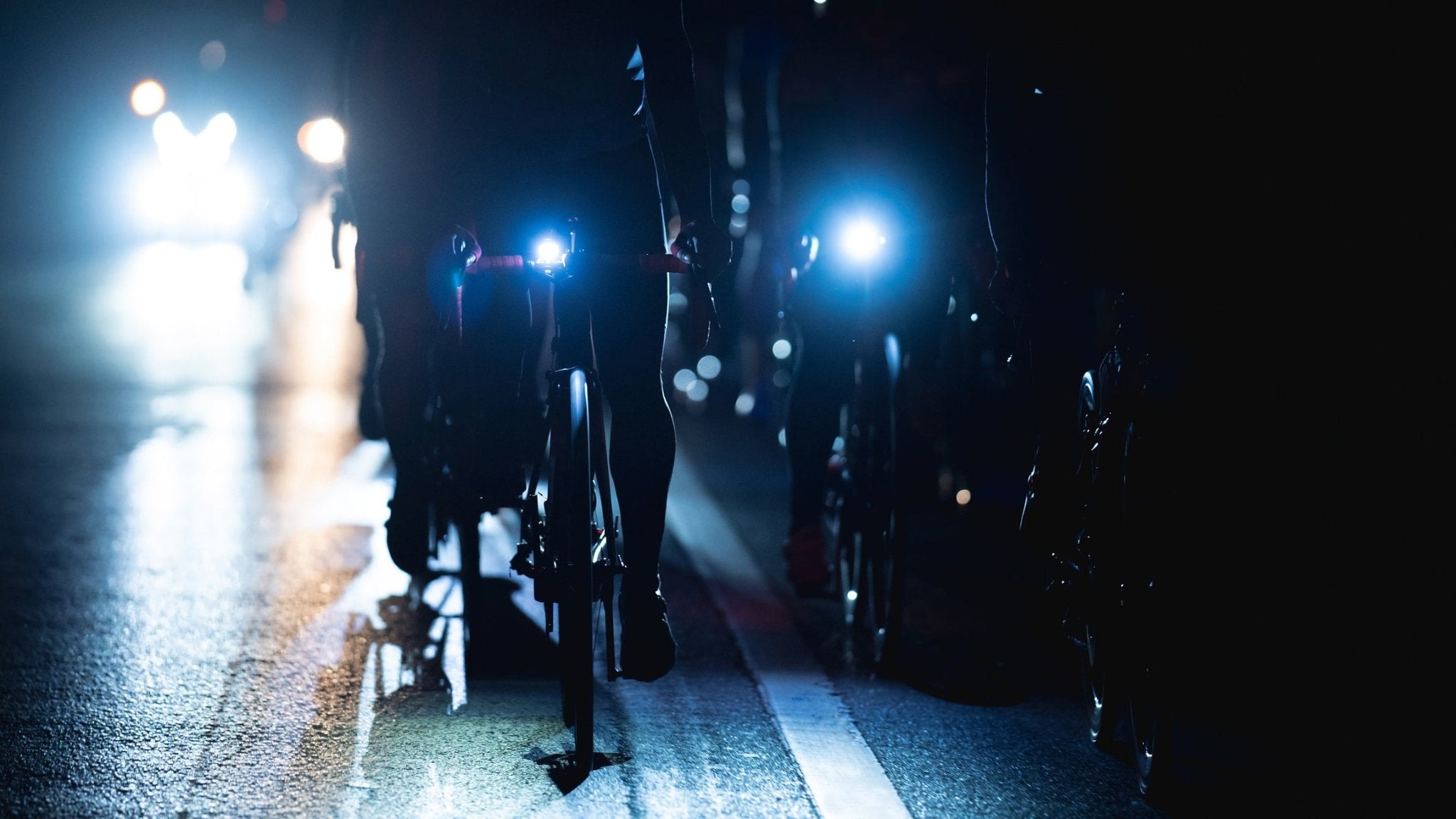Seven Tips For Safe Cycling - Rules Of The Road & Safe Cycling Practices

When we ride on the road and share it with vehicles, drivers don't want us there.
When we ride on multi-way trails and share them with pedestrians, pedestrians don't want us there.
As a cyclist, you might find yourself peacefully riding along a road, not causing any impact on any driver or pedestrian and you can still find yourself the target of abuse and hatred. I've had things thrown at me from a moving car. My husband and I were squeezed over to a stop on the side of a road by a vehicle just so they could scream at us and tell us to ride on the sidewalk. They were 100% wrong about us riding on the sidewalk: as you know, we are actually not supposed to ride on the sidewalk.
And we're not the only ones who have had a car pass us only to swerve in front of us and slam on their brakes, trying to get us to rear-end him. It’s a dangerous thing and I’m not sure what the drivers are thinking: if we actually do lose control and hit their car or crash onto the road, what do they think will happen and what do they plan to do? It is a dangerous driving practice and illegal.
Seven Tips For Safer Cycling
In spite of all the dangers of riding in mixed traffic and in spite of the periodic animosity to our presence, we still ride. So, what do we do in order to maximize our safety and minimize our risk and exposure. Here’s a short list of things we all need to do as cyclists:
1. Stay Alert and Avoid Distractions
Riding a bike requires full attention, just like driving a car. Avoid using your phone while cycling. If you need to make a call or take a photo, pull over to a safe spot first. Remember, the rules that apply to vehicles generally apply to bikes too.
Paying attention while riding also means not playing with your phone while riding. Bikes are considered to be vehicles in traffic safety codes so rules that apply to vehicles also apply to us. That includes the ban on cell phone use while riding. If you want to take a picture, pull over to the side of the road when and where it is safe. Ditto if your phone rings when you are riding. People have been cycling for decades, even hundreds of years without cell phones: chances are pretty good that we can manage without answering a call, texting, reading or taking photos until it is safe to do so.
2. Choose Your Routes Wisely
Some roads are safer than others. Opt for bike-friendly routes with designated lanes whenever possible. Some roads are safer for cyclists than others, whether it be because of traffic volume, width or condition of the shoulder or known hazards. It’s your ride, so prioritize your safety.Where possible, choose your routes accordingly.
3. Be Visible
Visiblity is crucial to maximizing your potential safety as a cyclist. You can't ride naked so you might as well dress your best for safety: wear bright colours, reflective accents, bold graphics and lights. And, while lights are necessary in low light conditions, we're seeing more and more cyclists using brighter lights during daytime hours in order to be seen. The more visible you are, the easier it is for drivers and pedestrians to see you. We’ve posted articles on this topic and there are lots of other resources online on the topic.
4. Wear a Properly Fitted Helmet
A helmet can be a lifesaver. Ensure it fits well and meets safety standards. It's a simple step that can significantly reduce the risk of head injuries.
5. Stay Aware of Potential Hazards
Keep an eye out for obstacles, blind spots, and unpredictable movements from vehicles and pedestrians. Always be prepared to react quickly. Think about potential blind spots, both in terms of roads, corners, turns and obstacles but also in terms of where you are riding with respect to vehicles. If you can’t see a driver’s face in their mirror, they can’t see you either.
6. Follow the rules of the road.
Cycling laws can vary by location, so familiarize yourself with local regulations. Obey traffic signals, use hand signals to indicate turns, and respect other road users. Awareness of e-bike restrictions and other specific local rules is also important.
One example that we’ve heard and that may become more common is the restriction of access to shared use pathways for certain types of e-bikes. This restriction often applies to specific classes of e-bikes so, as e-bike use grows, this will become more relevant to more people. Here in Alberta, an electric bicycle must not be more powerful than 500 watts and have a maximum speed of 32 km/h. The e-bike must have fully operable pedals which means they cannot be primarily battery controlled.
7. Ride smart: ride predictably and courteously.
Cycling predictably makes you more predictable to others. Signal your intentions, avoid sudden movements, and show courtesy to all road users. This not only enhances your safety but also helps improve the relationship between cyclists and other members of the community. Unnecessary negative sentiment against cyclists in lycra is out there. Good, safe and predicably riding habits can go a long way to improving cycling safety and the impression we can all make as cyclists. Compound that hatred with widespread ignorance of the rules of the road as they relate to cyclists and it becomes clear pretty quickly that cycling survival takes care, concentration and sometimes some quick maneuvers. A friend of mine once said: "There are cyclists and then there are people on bikes." Be a cyclist and be a good one who not only follows the rules of the road but one who uses good common sense, rides predictably and is courteous to other vehicles.
Report A Problem
If you encounter aggressive or dangerous behavior, document it if possible. Take photos, gather witness statements, and report incidents to the authorities. While outcomes may vary, reporting can raise awareness and potentially prevent future incidents.
By following these tips, you can enjoy safer rides and contribute to a more harmonious coexistence on the roads and trails.




Comments
Bill P —
Thanks for this Elise! They were pricey but I’m riding now with bike camera/lights. I’ve had very few negative riding experiences, but it feels reassuring to know I would have video evidence for any problems.